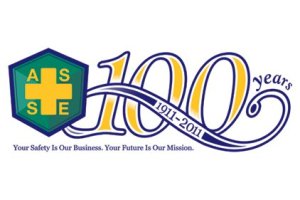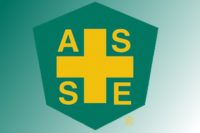 With the American Society of Safety Engineers (ASSE) embarking upon its second century of existence, ASSE President Terrie S. Norris, CSP, ARM is issuing a call for action to the occupational safety, health and environmental profession.
With the American Society of Safety Engineers (ASSE) embarking upon its second century of existence, ASSE President Terrie S. Norris, CSP, ARM is issuing a call for action to the occupational safety, health and environmental profession.
“As we move into the next 100 years of protecting people, property and the environment, we face many challenges," Norris said. ASSE turned 100 in 2011.
"Despite the dedicated efforts of ASSE’s members, employers, workers, the U.S. Occupational Safety and Health Administration (OSHA) and the National Institute for Occupational Safety and Health (NIOSH), the fact that fatalities are not significantly decreasing should be a call for action, not complacency, especially at an economically challenging time when some of the most dangerous industries are not at full employment."
According to the Bureau of Labor Statistics, 4,547 workers died from on-the-job injuries in 2010 compared with 4,551 in 2009.
“A statistical plateau of worker fatalities is not an achievement,” she said. “But evidence that this nation’s effort to protect workers is stalled. These statistics call for nothing less than a new paradigm in the way this nation protects workers.”
Norris said all stakeholders in occupational safety and health need to come down off the plateau of acceptance and work together to find conciliatory ways that help make sure the economy, jobs and corporate bottom lines can benefit from a safe and healthy workforce.
“We need to remind businesses that they should not cut back on occupational safety and health systems,” Norris said. “If they do, it will come back to severely haunt them in the future in the guise of increased health care and workers comp costs, production delays, reputation damage and much, much more.”
Norris said ASSE continues to remind businesses that cutting safety programs during a downturn is not advised. When a robust economy returns those companies that have not sustained a safety and health program may be faced with increased work injuries, illnesses, along with increased health and workers compensation costs and the added cost of re-establishing a culture for safety and health. On the other side, during the down economy Norris noted that ASSE continues to provide its members with key assistance including career resources, ongoing educational opportunities, local and international networking opportunities and more.
A challenge ahead for the profession and businesses, Norris said are risks expected from an aging work population. “As the group of workers born between 1946 and 1964 begin to retire, the U.S. Department of Labor notes that there is a shrinking labor pool to fill those positions. The flip side is that many of those aging works are delaying retirement due to the economy. Hence, in preparation, Norris notes, employers should prepare their work environment to meet the needs of aging workers. That would include simple changes such as improving illumination, eliminating heavy lifting, installing skid resistant materials for flooring and much more. ASSE members have and will continue to provide best practices, presentations and more on this issue to assist businesses, employers and employees with these changing demographics, Norris noted.
The issue will also be discussed during the June 3-6 ASSE Professional Development Conference in Denver along with sessions on 225 other key topics.
Norris also noted there is a dearth of SH&E resources for small and mid-size businesses. Currently, those businesses employing 50-249 employees have the highest rate of job-related injuries and illnesses in the U.S. today, and the least access to safety and health consultation. ASSE will roll out communications for small and mid-size businesses for the May North American Occupational Safety and Health (NAOSH) Week.
According to NIOSH, the demand for SH&E professionals continue to go up with employers expected to hire 25,000 new SH&E professionals in the next five years and estimating that there may only be 13,000 new SH&E professionals to fill those spots. Norris notes that ASSE and the ASSE Foundation continue to promote the profession by working with ASSE members, schools, practice specialty groups, elementary schools, and high schools offering scholarships, research grants and more.


